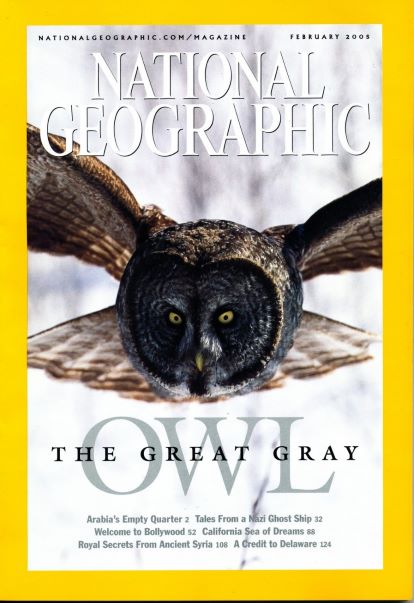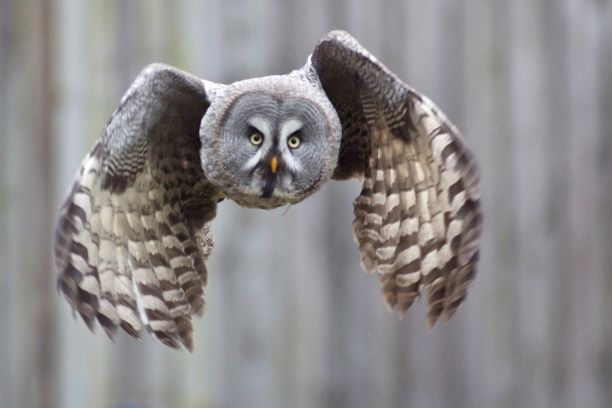New Mexican Bird Lady Report
The science editor at the Café noticed a number of stories on the irruption of Great gray owls in Minnesota. These owls are normally found in large numbers only in the northern boreal forests – central Alaska to central Ontario – and in the northern mountains – the Rockies, Cascades and Sierra Nevada.
Periodically, the owls will move south and east of their typical range. This movement is not a seasonal migration, but rather a following of the food supply. These owls are semi-nomadic, and will settle and nest wherever food resources are near. While the great gray owls are very protective of their nests, their foraging areas overlap. This creates higher than expected densities and frequent sightings during irruptions.
That is exactly what is happening this winter in Minnesota. The great grays are being counted in unprecedented numbers in northern Minnesota. Similar invasions have occurred in Michigan and New England in past years, but not in the same numbers as currently seen in Minnesota. Interestingly, these irruptions do not occur over the whole of the species’ normal range. Rather, there are exceptionally large counts in one area, and normal counts elsewhere throughout the range.
While other predator birds must migrate south in the winter, the Great gray doesn’t have to. Its facial disk funnels sound to the ears, and it can hear prey scurrying underneath the snow. The owl dives head first into the snow, and wiggles out with its prey skewered on the talons.

The Great gray owls are among the largest of the owls – 2 to 3 pounds in weight, up to 60” wing span, and 33” height. Their dense, fluffy plumage makes them appear even larger.
Coincidentally, National Geographic ran a cover story on the great grays for its February, 2005 magazine. The magazine has some great pictures, which you can’t get on the web without a subscription. There are also some great photos on Audubon’s eBird and Northern Michigan Birding.
What Is A Vole?

I assume every visitor to the Café knows what a vole is. I confess that I did not. All of the references to the Great Gray Owl mentioned the voles and the uncommon scarcity of voles in owls’ typical habitat. Knowing, as I do, just a bit about owls, I presumed that a vole was some sort of small rodent. But, quite frankly, I had never heard the term before. I must have missed that day in biology class.
Sure enough, a vole is a small rodent. It is often referred to as a field mouse, although it is more related to the lemming than to the typical mouse. A vole has small ears, which is one distinguishing characteristic from a mouse. A vole is generally larger (at 3 ½ to 7 inches) than most field mice I’ve seen.
What Is An Irruption?
This is another new vocabulary word at the Café. It may be that we heard it before but confused it with the similar eruption. But an irruption is a sudden sharp increase in the relative number of a population. (As an editorial comment, I personally believe we living through an irruption of morons in North America.)

Local birders often track the incursion of birds that don’t normally winter in their areas. These irruptions are thought to be driven by a lack of food on the normal wintering grounds.
Nine and ten year old students in Louisiana made a wonderful web page devoted to the great gray owls. This is a great example of what young science students can do. (2019 update – I did not find the website cited in the 2005 posting.)
Wolverine Café update of March 31, 2005
A New Mexican bird lady tipped me off to some great photographs of the Great Gray Owl on PBase.com.
2019 Update: The links in this posting are from our 2019 search, and not from the original 2005 posting.
